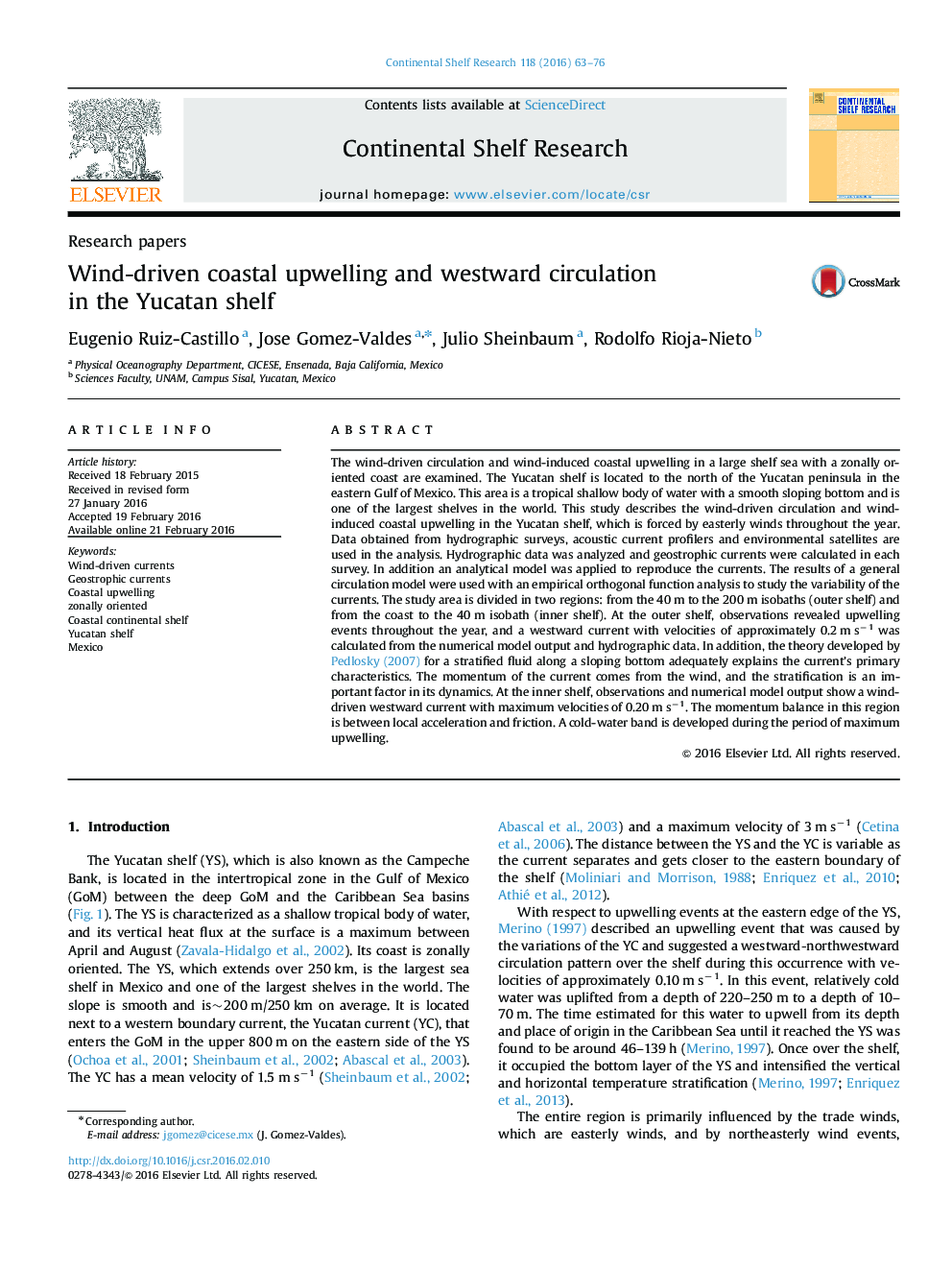| کد مقاله | کد نشریه | سال انتشار | مقاله انگلیسی | نسخه تمام متن |
|---|---|---|---|---|
| 4531592 | 1626095 | 2016 | 14 صفحه PDF | دانلود رایگان |
• We examine wind-driven phenomena in a shelf sea with a zonally oriented coast
• A westward current occurs in both the outer and inner shelves.
• Wind stress and heat flux are the driving mechanisms of the westward current in the outer shelf.
• Easterly wind stress drives the westward current at the inner shelf throughout the year.
• Coastal upwelling occurs year-round and is most intense during the spring season.
The wind-driven circulation and wind-induced coastal upwelling in a large shelf sea with a zonally oriented coast are examined. The Yucatan shelf is located to the north of the Yucatan peninsula in the eastern Gulf of Mexico. This area is a tropical shallow body of water with a smooth sloping bottom and is one of the largest shelves in the world. This study describes the wind-driven circulation and wind-induced coastal upwelling in the Yucatan shelf, which is forced by easterly winds throughout the year. Data obtained from hydrographic surveys, acoustic current profilers and environmental satellites are used in the analysis. Hydrographic data was analyzed and geostrophic currents were calculated in each survey. In addition an analytical model was applied to reproduce the currents. The results of a general circulation model were used with an empirical orthogonal function analysis to study the variability of the currents. The study area is divided in two regions: from the 40 m to the 200 m isobaths (outer shelf) and from the coast to the 40 m isobath (inner shelf). At the outer shelf, observations revealed upwelling events throughout the year, and a westward current with velocities of approximately 0.2 m s−1 was calculated from the numerical model output and hydrographic data. In addition, the theory developed by Pedlosky (2007) for a stratified fluid along a sloping bottom adequately explains the current’s primary characteristics. The momentum of the current comes from the wind, and the stratification is an important factor in its dynamics. At the inner shelf, observations and numerical model output show a wind-driven westward current with maximum velocities of 0.20 m s−1. The momentum balance in this region is between local acceleration and friction. A cold-water band is developed during the period of maximum upwelling.
Journal: Continental Shelf Research - Volume 118, 15 April 2016, Pages 63–76
